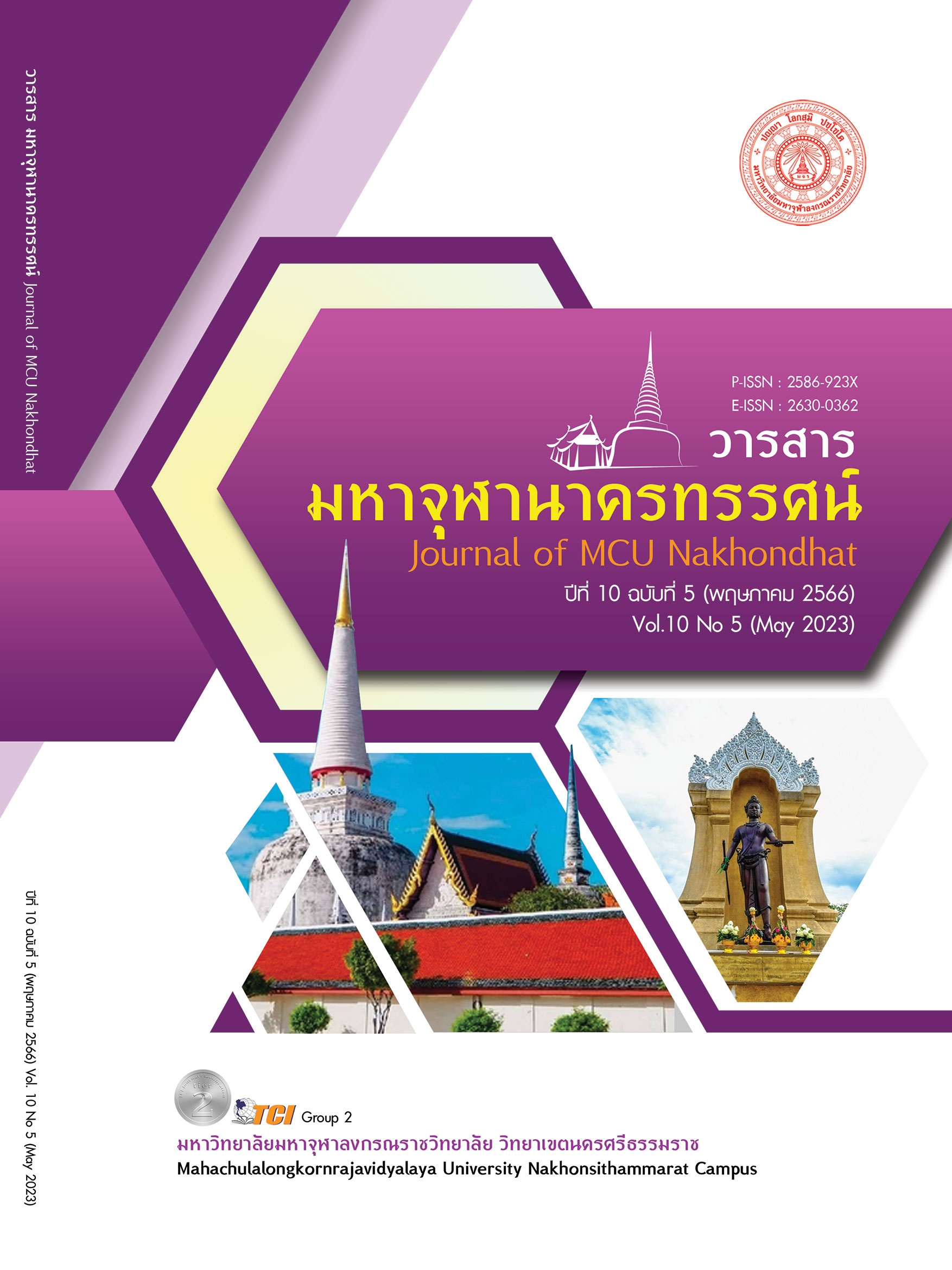LONG-TERM CARE FOR THE ELDERLY IN THAILAND: A POLICY PERSPECTIVE
Main Article Content
Abstract
This research paper studies long-term care policy for the elderly in Thailand. This is a documentary research based on the study of related documents with the application of content analysis methods. The study found that long-term care policies for the elderly in Thailand were divided into 2 categories: 1. Community/ Home Care policies are mainly national policies that define the basic concepts of elderly care. Some of them are departmental -level policies that set guidelines for building a long-term aged care system. The essence of the policy is that the elderly’s rights, values, and dignity must be taken into account. Families and communities should play a central role in caring for the elderly in both health and society. Relevant agencies provide support on budgets, social services, and knowledge on long -term care for the elderly to volunteers and in community and families. 2. Institutional Care policy is mainly at the departmental level that is established in accordance with national policy. The essence of this policy is the guidelines for long-term care for the elderly in both public and private institutions. Standards for providing services for long-term care for the elderly in various aspects, such as criteria for opening a business, admissions for the elderly, facilities, safety, and services. Thailand has primarily focused on family and community services since it possesses social capital that may be used as a mechanism for caring for the elderly. A change in the social structure has recently occurred, resulting in an increase in demand for aged care services from the private sector. As a result, the state has implemented additional policies concerning institutional services.
Article Details

This work is licensed under a Creative Commons Attribution-NonCommercial-NoDerivatives 4.0 International License.
References
กฎกระทรวง กำหนดให้กิจการการดูแลผู้สูงอายุหรือผู้มีภาวะพึ่งพิงเป็นกิจการอื่นในสถานประกอบการเพื่อสุขภาพ. (2563). ราชกิจจานุเบกษา เล่ม 137 ตอนที่ 61 ก หน้า 40 (31 กรกฎาคม 2563).
กรมประชาสงเคราะห์. (2542). ปฏิญญาผู้สูงอายุไทย. กรุงเทพมหานคร: กรมประชาสงเคราะห์.
ประกาศกระทรวงสาธารณสุขเรื่อง กิจการที่เป็นอันตรายตอสุขภาพ (ฉบับที่ 6). (2553). ราชกิจจานุเบกษา. เล่ม 127 ตอนพิเศษ 6 ง หน้า 40 (14 มกราคม 2553).
พระราชบัญญัติควบคุมการขอทาน. (2484). ราชกิจจานุเบกษา. เล่มที่ 85 หน้า 1324 (7 ตุลาคม 2484).
ภาสกร สวนเรือง และคณะ. (2561). การดูแลผู้สูงอายุที่มีภาวะพึ่งพิงของผู้ช่วยเหลือในชุมชน ภายใต้นโยบายการพัฒนาระบบการดูแลระยะยาวด้านสาธารณสุขสำหรับผู้สูงอายุที่มีภาวะพึ่งพิง. วารสารวิจัยระบบสาธารณสุข, 12(3), 437-451.
ศิริพันธุ์ สาสัตย์ และคณะ. (2552). การดูแลผู้สูงอายุระยะยาวในสถานบริการในประเทศไทย. กรุงเทพมหานคร: สถาบันวิจัยระบบสาธารณสุข .
สกานต์ บุนนาค และคณะ. (2563). การวิเคราะห์ภาวะสุขภาพ ภาระโรคและความต้องการบริการด้านสุขภาพในผู้สูงอายุไทย. เรียกใช้เมื่อ 23 ธันวาคม 2565 จาก https://thaitgri.org/?wpdmpro=โครงการการวิเคราะห์ภาว
สมบัติ ธํารงธัญวงศ์. (2549). นโยบายสาธารณะ :แนวความคิด การวิเคราะห์และกระบวนการ.(พิมพ์ครั้งที่ 14). กรุงเทพมหานคร: เสมาธรรม.
สำนักงานสถิติแหงชาติ. (2565). การสำรวจประชากรสูงอายุในประเทศไทย พ.ศ. 2564. กรุงเทพมหานคร: สำนักงานสถิติแห่งชาติ.
สำนักงานหลักประกันสุขภาพแห่งชาติ. (2559). แนวทางการบริหารงบกองทุน LTC ปี 2559. เรียกใช้เมื่อ 8 ธันวาคม 2565 จาก https://www.nhso.go.th/files/ 2016/01 แนวทาง59.pdf
Greve, B. (Ed.). (2017). Long-Term Care for The Elderly in Europe: Development and Prospects. (Social welfare around the world, 3). Abingdon, Oxon: Routledge.
OECD. (2007). Conceptual Framework and Methods for Analysis of Data Sources for Long-Term Care Expenditure. Retrieved November 20 , 2022, from https://www.oecd.org/els/ healthsystems/Conceptual%
Shen, S., et al. (2014). Long-term Care Insurance in China: Public or Private? Social Work in Health Care, 53(7), 679-692.


